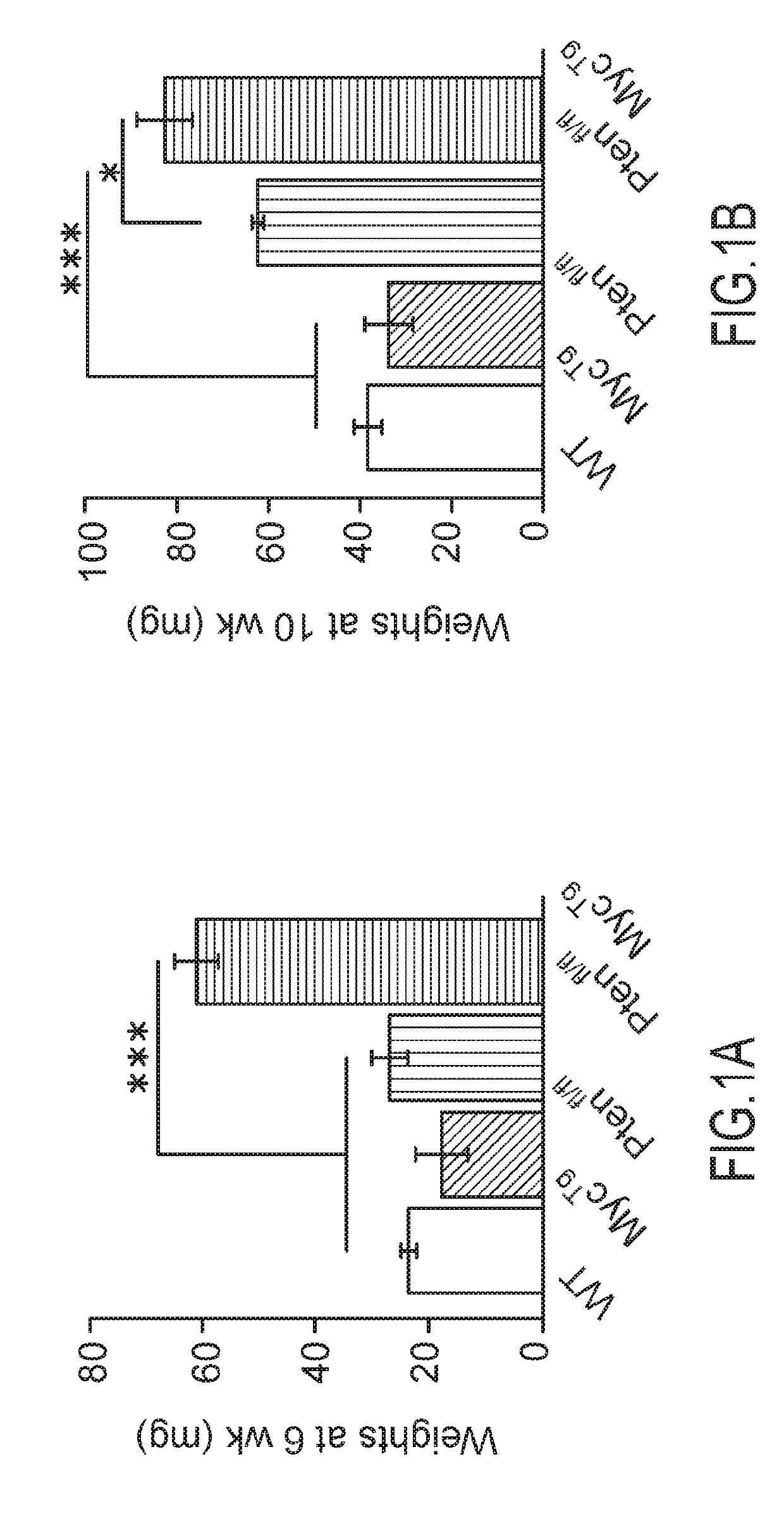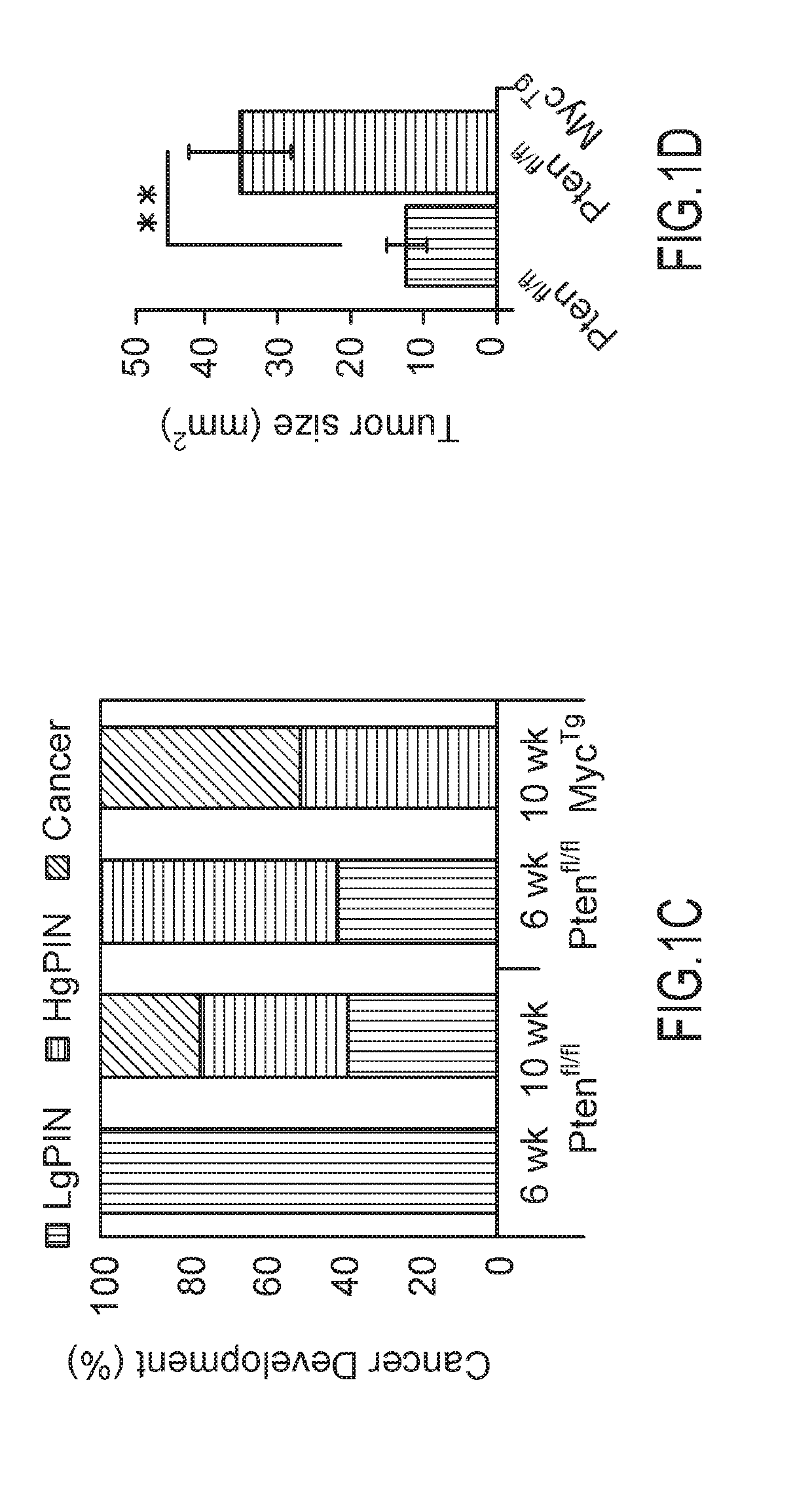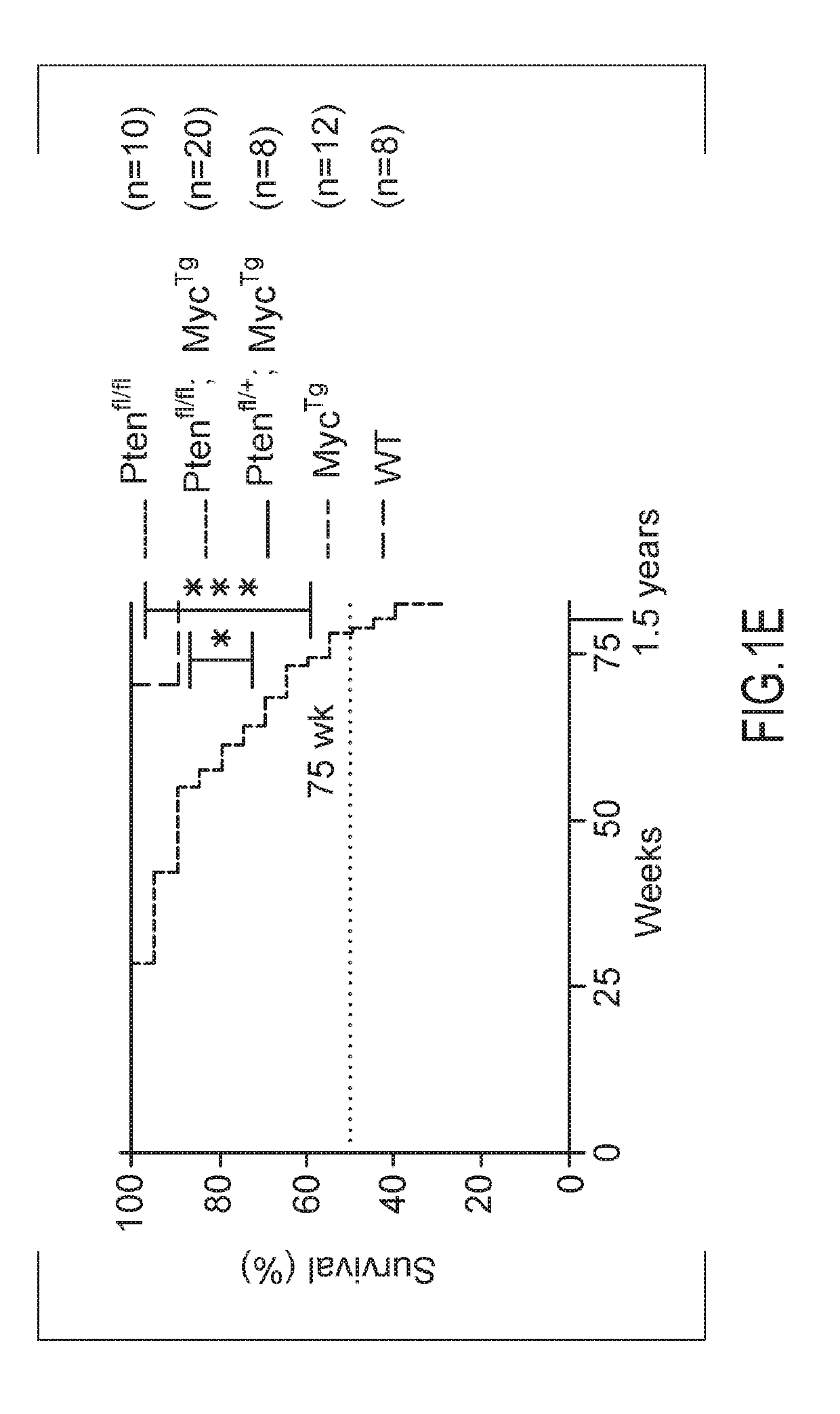Cancer Treatment Targeted to Tumor Adaptive Responses to Protein Synthesis Stress
- Summary
- Abstract
- Description
- Claims
- Application Information
AI Technical Summary
Benefits of technology
Problems solved by technology
Method used
Image
Examples
example 1
fication with PTEN Loss Diminish Oncogenic Increases of Global Protein Synthesis in Lethal Murine PCa
[0079]Distinct stages of human PCa were modeled in the mouse, using a newly generated conditional transgenic MYC mouse, where the overexpression of C-MYC is driven in a Cre-specific manner (MycTg), in combination with the conditional loss of PTEN in the prostate epithelium (Pb-cre4;Ptenfl / fl, herein referred to as Ptenfl / fl), as described in Lesche R, Groszer M, Gao J, Wang Y, Messing A, Sun H, Liu X, Wu H. Cre / loxP-mediated inactivation of the murine Pten tumor suppressor gene. Genesis. 2002; 32:148-149. [PubMed: 11857804]. The advantage of this mouse is that cells overexpressing MycTg can be traced through expression of green fluorescent protein (GFP) present in the targeting locus, allowing for visualization of the earliest events in tumorigenesis. In agreement with the notion that MYC hyperactivation may be a secondary event for human PCa development, it was observed that MYC ove...
example 2
e PCa Activates a Key Cellular Stress Response During Tumor Development
[0081]Proteins that are synthesized in the secretory pathway amount to about 30% of the total proteome in most eukaryotic cells. Although UPR activation can be studied with pharmacological inducers of ER stress, under physiological processes, the activation of the UPR may reduce the unfolded protein load through several prosurvival mechanisms, including the expansion of the ER membrane and the selective synthesis of key components of the protein folding and quality control machinery. To address how cancer cells respond and adapt to a protein synthesis burden in vivo and downstream of specific oncogenic lesions, it was tested whether a specific molecular signature of the UPR may be activated in Ptenfl / fl-versus Ptenfl / fl; MycTg-derived PCa.
[0082]Quantitative immunofluorescence (IF) staining was performed for cleaved ATF6, P-IRE1, and P-PERK during tumor development to test whether the UPR was activated during PCa ...
example 3
ng Protein Synthesis Through P-eIF2α is Required for Aggressive PCa Progression
[0083]A general UPR response may promote adaptation to proteotoxic and ER stress, whereas the activation of P-eIF2α could place a direct brake on the overwhelming burden of protein synthesis that occurs during more aggressive tumorigenesis. To test this hypothesis, the organoid cultures were employed, which recapitulate the in vivo phenotype. The Ptenfl / fl;MycTg cultures showed increased activation of P-PERK, P-eIF2α, and expression of ATF4, which is a known target of the PERK-P-eIF2α axis (FIG. 3A). To determine whether the activation of this adaptive response was altering global protein synthesis, a small-molecule inhibitor of P-eIF2α activity, ISRIB was used, a compound that selectively reverses the effects of eIF2α phosphorylation. Specifically, P-eIF2α binds its dedicated guanine nucleotide exchanging factor (GEF), eIF2B, with enhanced affinity relative to eIF2α. Thus, P-eIF2α sequesters eIF2B from i...
PUM
| Property | Measurement | Unit |
|---|---|---|
| Stress optical coefficient | aaaaa | aaaaa |
Abstract
Description
Claims
Application Information
 Login to View More
Login to View More - R&D
- Intellectual Property
- Life Sciences
- Materials
- Tech Scout
- Unparalleled Data Quality
- Higher Quality Content
- 60% Fewer Hallucinations
Browse by: Latest US Patents, China's latest patents, Technical Efficacy Thesaurus, Application Domain, Technology Topic, Popular Technical Reports.
© 2025 PatSnap. All rights reserved.Legal|Privacy policy|Modern Slavery Act Transparency Statement|Sitemap|About US| Contact US: help@patsnap.com



